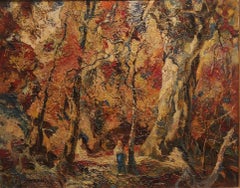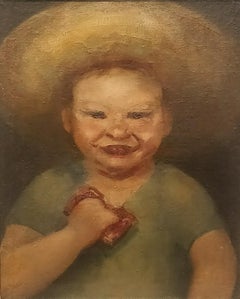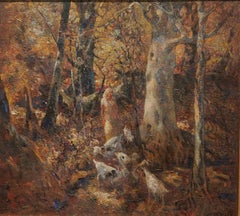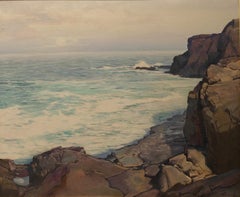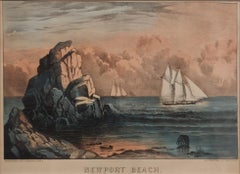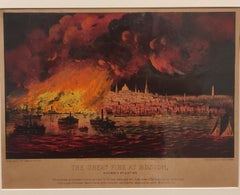Lincoln Glenn
1940s Impressionist Landscape Paintings
Oil
John E. Costigan"Autumn Wood Interior" John E. Costigan, Early 20th Century Landscape Painting, 1946
1920s American Realist Portrait Paintings
Oil
Mid-20th Century Landscape Paintings
Canvas, Oil
1920s American Impressionist Figurative Paintings
Oil, Canvas
Late 19th Century Realist Figurative Prints
Lithograph
1870s Realist Landscape Prints
Lithograph
Early 20th Century Modern Landscape Drawings and Watercolors
Crayon
Early 20th Century Modern Landscape Paintings
Canvas, Oil, Board
1960s Color-Field Abstract Paintings
Canvas, Oil
1890s Realist Figurative Sculptures
Bronze
1970s Abstract Paintings
Linen, Acrylic
1990s Abstract Figurative Paintings
Linen, Acrylic
19th Century Realist Figurative Paintings
Canvas, Oil
1970s Assemblage Mixed Media
Canvas, Vinyl, Graphite, Pigment
1930s Abstract Abstract Paintings
Canvas, Oil
1980s Modern Landscape Paintings
Paper, Pastel
1990s Modern Landscape Paintings
Paper, Pastel
Early 2000s Abstract Abstract Paintings
Canvas, Acrylic
1970s Abstract Abstract Paintings
Canvas, Oil
1870s Academic Landscape Paintings
Canvas, Oil, Board
1950s Abstract Figurative Sculptures
Bronze
1970s Abstract Abstract Paintings
Paper, Ink, Graphite
1970s Abstract Abstract Paintings
Acrylic, Paper, Ink, Graphite
1990s Abstract Mixed Media
Paper, Acrylic, Board
1970s Abstract Abstract Paintings
Acrylic
1960s Abstract Abstract Paintings
Paper, Acrylic, Graphite
1990s Abstract Mixed Media
Paper, Ink, Board
1970s Abstract Abstract Paintings
Linen, Paper, Acrylic
1970s Abstract Abstract Paintings
Linen, Acrylic
1970s Abstract Abstract Paintings
Linen, Acrylic
1960s Abstract Paintings
Linen, Paper, Acrylic
Late 20th Century Still-life Paintings
Canvas, Oil
1890s Mixed Media
Mixed Media, Oil, Board
1960s Abstract Abstract Paintings
Canvas, Oil
1960s Abstract Abstract Paintings
Canvas, Oil
19th Century Landscape Paintings
Canvas, Oil
Mid-20th Century Modern Still-life Paintings
Canvas, Oil
Early 1900s American Impressionist Portrait Paintings
Canvas, Oil
1980s Landscape Paintings
Canvas, Oil
1980s Landscape Paintings
Canvas, Oil
1910s American Impressionist Landscape Paintings
Canvas, Pastel
1980s Abstract Mixed Media
Fabric, Paper, Mixed Media, Laid Paper
1970s Drawings and Watercolor Paintings
Paper, Ink
Early 20th Century Abstract Abstract Drawings and Watercolors
Paper, Pencil
1950s Abstract Abstract Paintings
Canvas, Oil
1890s Impressionist Figurative Paintings
Canvas, Oil
Mid-20th Century Cubist Still-life Paintings
Canvas, Oil
1980s Realist Animal Paintings
Oil, Board
1980s Realist Animal Paintings
Oil, Board
1980s Realist Animal Paintings
Oil, Board
1970s Realist Animal Paintings
Oil, Board
1990s Realist Animal Paintings
Oil, Board
1980s Realist Animal Paintings
Oil, Board
1990s Realist Animal Paintings
Oil, Board
1980s Realist Animal Paintings
Oil, Board
1990s Realist Animal Paintings
Oil, Board
1990s Realist Animal Paintings
Oil, Board
1990s Realist Animal Paintings
Oil, Board
1990s Realist Animal Paintings
Oil, Board
1980s Realist Animal Paintings
Oil, Board
